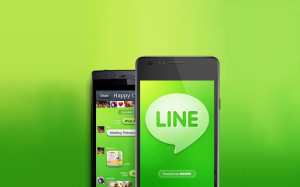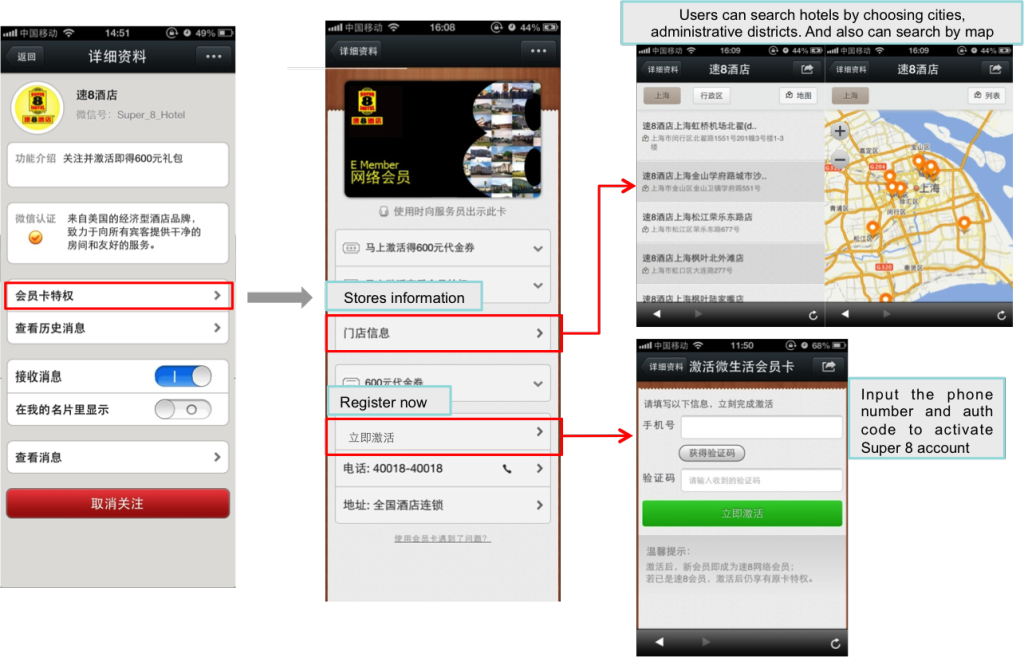 Just when companies were starting to get the hang of Weibo and other social media platforms, social instant messaging was added into the mix. Renaud Edouard-Baraud, CEO of L’Atelier BNP Paribas Asia, says that companies will have to rethink their digital sales and communication channels again in order to adapt to the new mobile, social instant messaging era.
Just when companies were starting to get the hang of Weibo and other social media platforms, social instant messaging was added into the mix. Renaud Edouard-Baraud, CEO of L’Atelier BNP Paribas Asia, says that companies will have to rethink their digital sales and communication channels again in order to adapt to the new mobile, social instant messaging era.
The rapid emergence of social instant messaging (SIM)—Line in Japan, KakaoTalk in South Korea or WeChat in China—means that online conversations could soon be a thing of the past. No more spam, no more complicated paths to unsubscribe from and no more targeted advertisements to deal with. The time of landing consumers like fish is over: we could be finally entering the much-anticipated era of one-to-one marketing.
Five years ago companies operating in China began entering willingly, or unwillingly, into a spiral of semi-open social media following the 2009 launch of Renren and Sina Weibo, equivalents of Facebook and Twitter respectively. Tencent Weibo followed in 2010.
Businesses were quick to understand the importance of these platforms for interacting with current and potential customers. These customers soon emerged from anonymity and became real people living in actual cities, and they stopped merely consuming information and began providing it themselves; this ushered in the era of UGC or user-generated content, where users began marketing themselves as brands (‘personal branding’).
The buzz in Asia has now passed to SIM, but what exactly are these new platforms? They are essentially applications for mobile phones that allow users to post or exchange voice, text or video messaging using wireless technology. Unlike their ancestors, such as Skype or MSN, these platforms were born after the rise of collaborative media, thus you can share multimedia messages with your contacts, as well as on external social media. In order to view this content, users must be already connected to the contact and then access specific sections of the application.
Brands are able to communicate with mobile users as if they were contacts, but there are some limitations. Users can unsubscribe from a brand in two clicks and a company has no recourse. Paid accounts present a potentially more interesting function but they are restricted in terms of frequency with a maximum of one message per week allowed. There is also no way of advertising within these platforms.
 In WeChat the only way for a company to be visible to ‘non-connected’ consumers is if another ‘connected’ consumer shares the content sent by the company in their personal timeline or ‘moments’; it then has the potential to be viewed by their personal contacts. There is also no guaranteed way of recruiting consumers by sending a message, as to do this requires the users ID. Even if a company had such information, there is nothing to prevent the user from blocking such unsolicited messages.
In WeChat the only way for a company to be visible to ‘non-connected’ consumers is if another ‘connected’ consumer shares the content sent by the company in their personal timeline or ‘moments’; it then has the potential to be viewed by their personal contacts. There is also no guaranteed way of recruiting consumers by sending a message, as to do this requires the users ID. Even if a company had such information, there is nothing to prevent the user from blocking such unsolicited messages.
Another unwanted consequence of these platforms is that consumers are becoming quieter. Conversations challenging a brand or service are hidden behind an electronic curtain, and such posts cannot be accessed via search engines.
For now SIM, and WeChat in particular, are user-centric, not brand-centric. Monetisation only occurs during the purchase of emoticons or when users subscribe to paid accounts, which puts the power firmly in the hands of the consumer.
If these tools were still in their infancy, known only to a handful of hipsters, they would not pose a challenge, but Kakao Talk has over 100 million users, Line more than 250 million and WeChat reached 600 million users last November; their respective penetration rates are 60 per cent in South Korea, 40 per cent in Japan and around 50 per cent in Mainland China. Companies will disregard these figures at their own peril.
Adapting to change
 When a company manages to recruit subscribers through stores, campuses or websites operated by Tencent, the consumer experience is very fluid. If the company sends a message to a mobile user, the user may choose to click on it if it interests them. This will take them to the company’s mobile website without having to leave the WeChat app. It is even possible to make purchases directly in the app, as third-party payment systems (Tenpay and Alipay) are already part of the user experience.
When a company manages to recruit subscribers through stores, campuses or websites operated by Tencent, the consumer experience is very fluid. If the company sends a message to a mobile user, the user may choose to click on it if it interests them. This will take them to the company’s mobile website without having to leave the WeChat app. It is even possible to make purchases directly in the app, as third-party payment systems (Tenpay and Alipay) are already part of the user experience.
This has an immediate implication—the digital assets of a company must be optimised for mobile. They should eventually feature the same functional capacity of mobile devices, for example, the ability to capture images and sound, and the ability to locate itself. Brands must also revise their physical communication channels, such as posters and flyers, to incorporate quick response (QR) codes, the most efficient method of connecting consumers to WeChat accounts.
A current aggregate of subscribers to various Weibo services represents 80 per cent of Chinese netizens, but WeChat is gaining fast. It is already the largest social media platform in tier-one cities, and just needs to wait for higher penetration of Smartphones in tiers two to five to continue its inexorable growth.
As a consequence traffic on open social media, like SinaWeibo, is declining and traffic on semi-closed platforms, like SNS and Renren, even more so. Admittedly, most of their customers are already accessing these services via mobile devices, but they are already outdated: they were created for the PC and the ‘personal branding’ era.
The SIM movement is not limited to Asia: Twitter has announced its private message system, and there is Snapchat, Facebook messenger and Blackberry’s BBM, which has just been opened to brands. Others worth mentioning are MXit, used by nearly seven million South Africans (with just 12 million total Internet users), and WhatsApp with almost 200 million active monthly users.
This paradigm shift in digital media dictates that companies must adapt and grow with these new platforms or risk getting left behind. Even if you don’t want to buy a verified account straight away, consider at least testing free accounts in order to understand how they work and how other brands are already utilising them.
The question remains: how will your brand adapt to this new reality?
L’Atelier, a subsidiary of BNP Paribas, operates as a tracking and analysis centre for disruptive innovations. Since its creation in 1978, L’Atelier’s purpose has been to bring innovative ideas to the various sectors of industry and to help them identify opportunities and possible directions for future growth and development. L’Atelier is also an interface between fortune 1,000 companies and innovative communities (start-ups, innovation clusters, etc.). L’Atelier headquarters are in Paris, with two regional offices: Shanghai for APAC and San Francisco for the Americas.



In the US, Facebook’s acquisition of Whatsapp has caused some head scratching. Americans haven’t yet caught on to apps like Whatsapp and Wechat, probably because we started our online social activity with PCs first, and mobile followed. But now that Facebook will integrate Whatsapp, American marketers will soon have to master the SIM platform. While living and working in China my consumer experience with Wechat and Whatsapp and foray into using Wechat as a marketing tool may give me the edge now that I’m back in the States. Thanks for an interesting perspective!